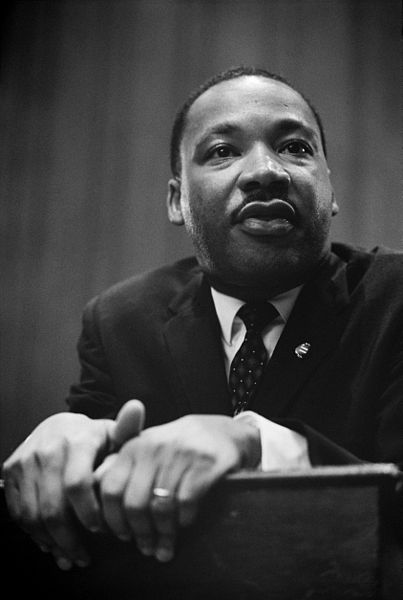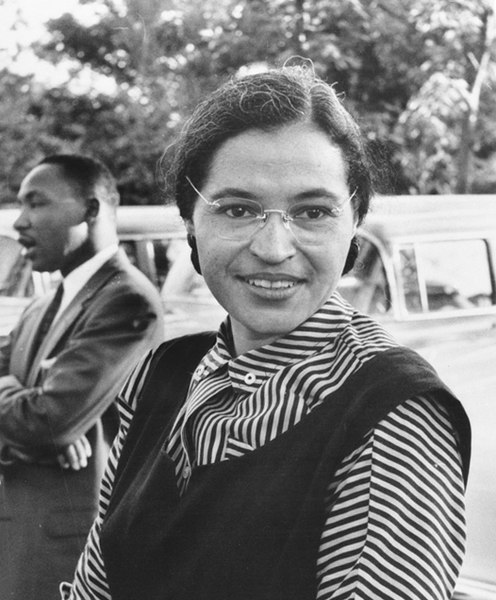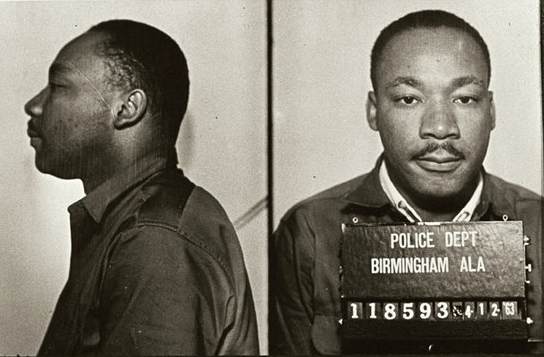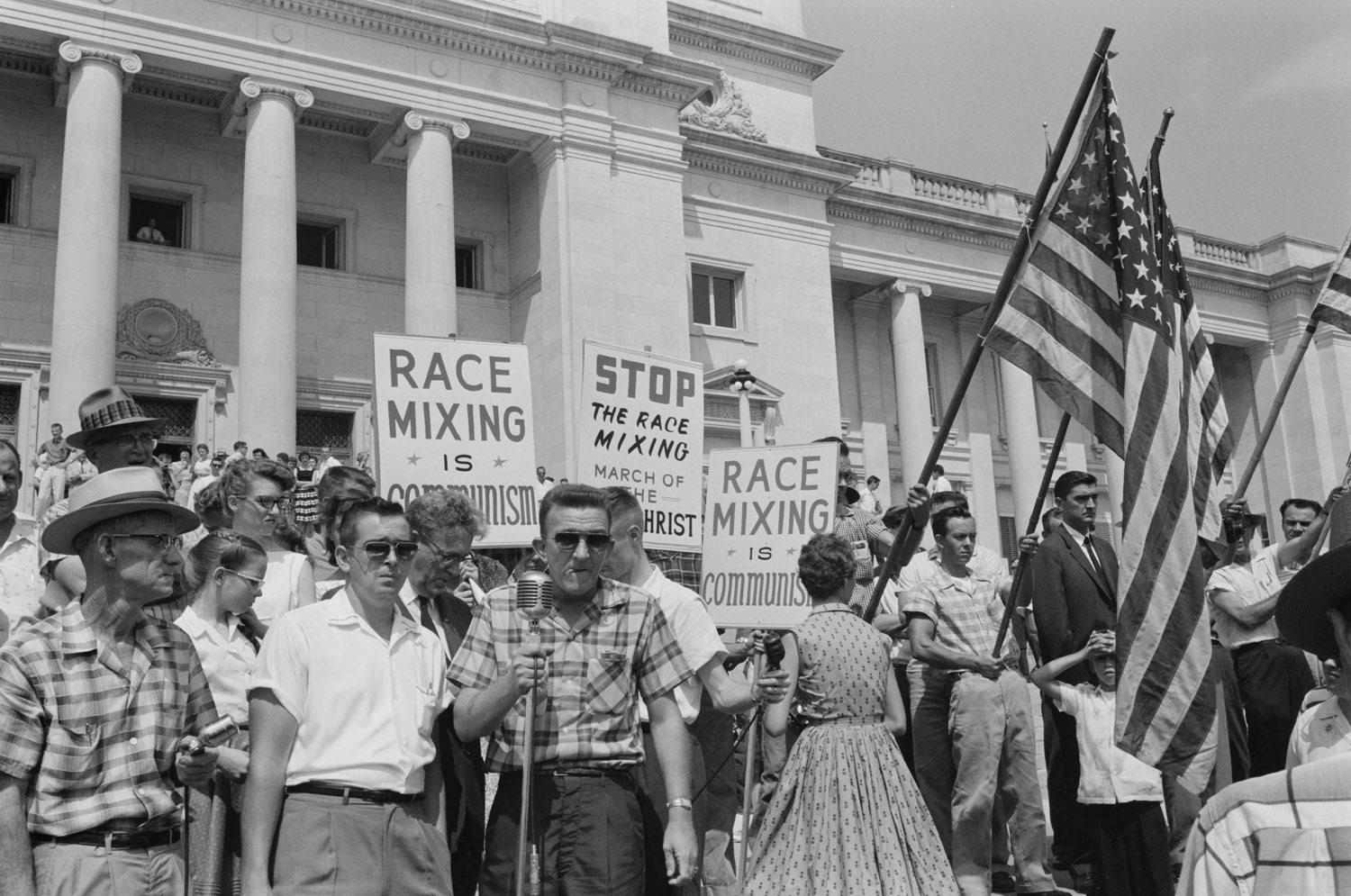With MLK Day approaching, we thought it would be important to take a closer look at the life and legacy of the Civil Rights activist who lent his name to this national holiday and profoundly shaped US-history and present, namely Martin Luther King Jr.
Martin Luther King, Jr. Day is a US-American federal holiday that is observed in honor of Martin Luther King Jr. While it had been celebrated in several states around his birthday every third Monday in January since 1986, MLK Day became a nation-wide holiday in 2000, though it is not exclusively named after King in every state. Particularly in the Southern States of the US, such as Mississippi and Alabama, this has led to strange combinations in which Martin Luther King Jr. and Robert E. Lee, commander of the Confederate States Army in the American Civil War and opponent of racial and political equality for African Americans, are commemorated on the same day. But in this article, we will focus on the chief spokesperson of nonviolent protest in the US-American Civil Rights Movement of the 1950s and 1960s, namely Martin Luther King Jr.
Born on the 15th of January in 1929 into a comparatively wealthy and politically active Baptist family, King Jr. grew up in Atlanta, Georgia, where he, like every other Black person, had to face racial segregation and discrimination in schools, churches, and the public sphere. Being an excellent student in elementary, middle, and high school, he was admitted to Morehouse College when he was only 15 years old. Morehouse College is a private, all-male, historically Black college in Georgia, where King Jr. studied Sociology. During his studies, he philosophically and politically educated himself by taking classes on racial segregation and injustice and learning about the non-violent resistance of Gandhi in India as well as reading the works of Plato, Locke, Rousseau, Aristotle, Thoreau, and Rauschenbusch. While still in college, King Jr. was also curate to his father, who was the preacher of the Ebenezer Baptist Church in Atlanta. More and more, he realized the importance of preachers in changing the mindsets of people and thus in bringing about change in society as a whole, upon which he decided to study theology in order to be able to become a preacher himself.

In support of the Montgomery Bus Boycott, King Jr., who had newly moved to Alabama with his family, helped coordinate the Montgomery Improvement Association. In the following years, he traveled to several cities, mainly in the Southern states, and vehemently campaigned for non-violent protest. In 1957 alone, Martin Luther King Jr. gave 208 speeches and wrote his first book, Stride Toward Freedom: The Montgomery Story. Back in Alabama in 1960, he was arrested due to his participation in a sit-in and brought to the Georgia State prison in Reidsville, a stronghold of the Ku-Klux-Klan at the time, only to be released a few weeks thereafter thanks to John F. Kennedy’s commitment to the cause. Besides giving further speeches to encourage both Black and white adults as well as children to protest racial injustices and segregation, King Jr. also continued to organize and participate in boycotts, sit-ins, and demonstrations, which were countered with massive violence by the police. The nation-wide spread of the brutal scenes resulted in the repeal of certain laws that prevented Black Americans from entering restaurants and being promoted at their workplace. Murders of Black and white civil rights activists repeatedly shook the public, the perpetrators always being militant white racists.
In these years, the Black population developed a strong self-confidence so that they started to defend themselves against racist attacks and other racially motivated forms of degradation and humiliation. In a reaction to the continuous demonstrations, newly elected President John F. Kennedy presented the Civil Rights Act that was passed in 1964, granting racial equality and prohibiting racial segregation. Even though this bill was already tabled in 1963, King Jr. insisted on carrying out the long-planned March on Washington for Jobs and Freedom, also known as the Grand March on Washington, in order to continue to raise awareness for the racist problem and the injustices Blacks have to endure. More than 250.000 people participated in the march and listened to King Jr.’s famous speech ‘I Have a Dream’ at the Lincoln Memorial in Washington D.C. that went down in history as one of the most impactful and memorable speeches in the world (click here for the transcript of the speech). On the 11th of December in 1964, Martin Luther King Jr. received the Nobel Peace Prize.
In 1965, King tried to reach the unconditional inclusion of Black US-Americans in the electoral roll in the small town of Selma near Montgomery, again by organizing a demonstration. At that time, Black people had to answer questions about US-American history and the constitution correctly before they could exercise their right to vote. First, King organized several marches to the courthouse of Selma. But day after day, Sheriff Jim Clark’s police dispersed the demonstrators, many of whom were arrested. After a police officer shot and killed the Black lumberjack Jimmy Jackson, King decided to organize a large demonstration in Montgomery. But the demonstrators were already driven apart by the police beyond Selma’s city limits. Only a third of those who participated in the march reached their destination under the protection of the US Army and National Guard soldiers sent by President Johnson. After the march on Selma, the president called for new electoral laws in March 1965. In the summer of that year, Congress passed the Voting Rights Act.
In the course of his commitment to the Civil Rights Movement, Martin Luther King, Jr. came up with the idea of imitating the symbolic action of his patron saint Martin Luther, namely his posting of his theses, in Chicago. On the 10th of July in 1966, he delivered a programmatic speech before an audience of 36,000 people in the Soldier Field football stadium, whereupon he led the crowd to the town hall, where he stapled 48 theses to the metal door. In his theses, King Jr. primarily denounced the business of profiteering in Black ghettos and, calling for improvements in housing, education, and labor for Blacks, turned to the responsible figures in society and economy.
Moreover, King vehemently opposed the Vietnam War and argued that the money invested in the military could more effectively be used to fight great social issues within the US, whereupon he became a persona non grata in the White House.
On the 3rd of April in 1968, King Jr. delivered another very famous speech which became known as ‘I’ve Been to the Mountaintop’, in which King Jr. told the masses that he no longer feared anything in this world for he had seen the Promised Land, a formulation from Deuteronomy 34, 1-5, which has been interpreted as a premonition of his own death (click here to check out the transcript and audio file of this speech). One day later, at 6.01 p.m., Martin Luther King Jr. was shot dead by James Earl Ray, who had had several previous convictions, on the balcony of the Lorraine Motel in Memphis Tennessee, which is the National Civil Rights Museum today.
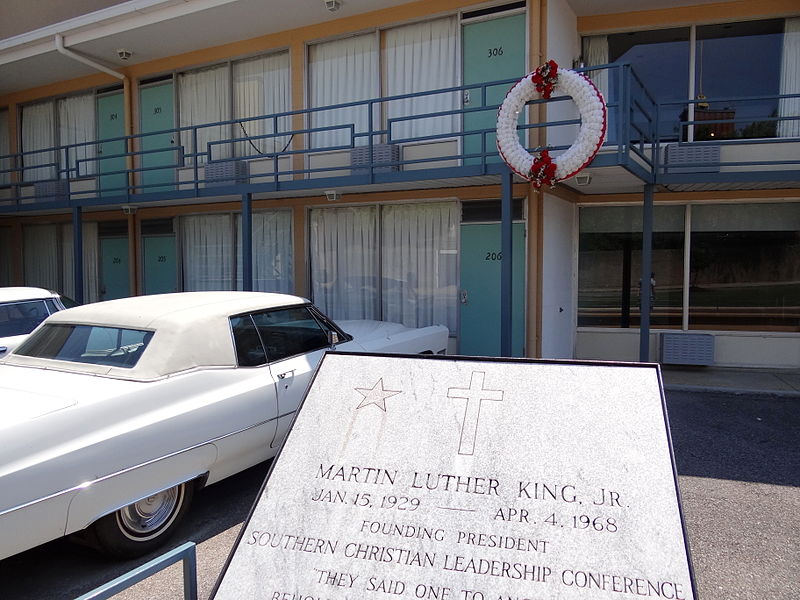
Nonviolence had always been Martin Luther King’s main premise. Formally, the demonstrators and civil rights activists who followed Martin Luther King’s call to non-violent disobedience and protest broke laws and were constantly aware of the risk of being hurt. Still, they refused to take violent measures themselves (in contrast to, for example, Malcolm X and the Black Panther Party) in order to clarify the contrast between the morally superior positions of the Civil Rights Movement on the one hand and the violent racists on the other.
Today, the USA is described as a post-racist society in which institutionalized racism has been formally abolished but in which the effects of the centuries of overt political oppression still lingers. However, the often-heard idea that nothing has changed since the days of the Civil Rights Movement is also incorrect. Economically, there is an ambiguous picture: When compared to the 1960s, on the one hand, African Americans have caught up significantly and there is a solid Black middle class. On the other hand, as a social group, Blacks are still at the bottom of the social ladder with regard to all economic indicators (GDP, employment rates, wages, loans, home ownership, etc.), which is in itself a manifestation and after-effect of the structural and political racism that has affected the lives of Black Americans for many centuries and still continues to do so. Apart from the economic factors, there is also still a long way to go in education, the judicial system, everyday practices, and other areas to achieve complete equality and justice. There is always another step to take: While in the 1950s and 1960s, Civil Rights activists demanded very basic political rights, today, we can rather focus on particular needs and demands of, for instance, Black women, Blacks with disabilities, incarcerated Blacks, or Blacks in the LGBTQ+ community while still questioning and criticizing deep-rooted issues of a post-racist society. This is also why I believe that Martin Luther King’s legacy and his political commitment are still relevant, as he has shown how the non-violent approach that we ought to take today in an attempt to establish a society in which no one is superior to anyone and everyone can “sit down at the table of brotherhood” (and sisterhood, for that matter) can be highly effective.


